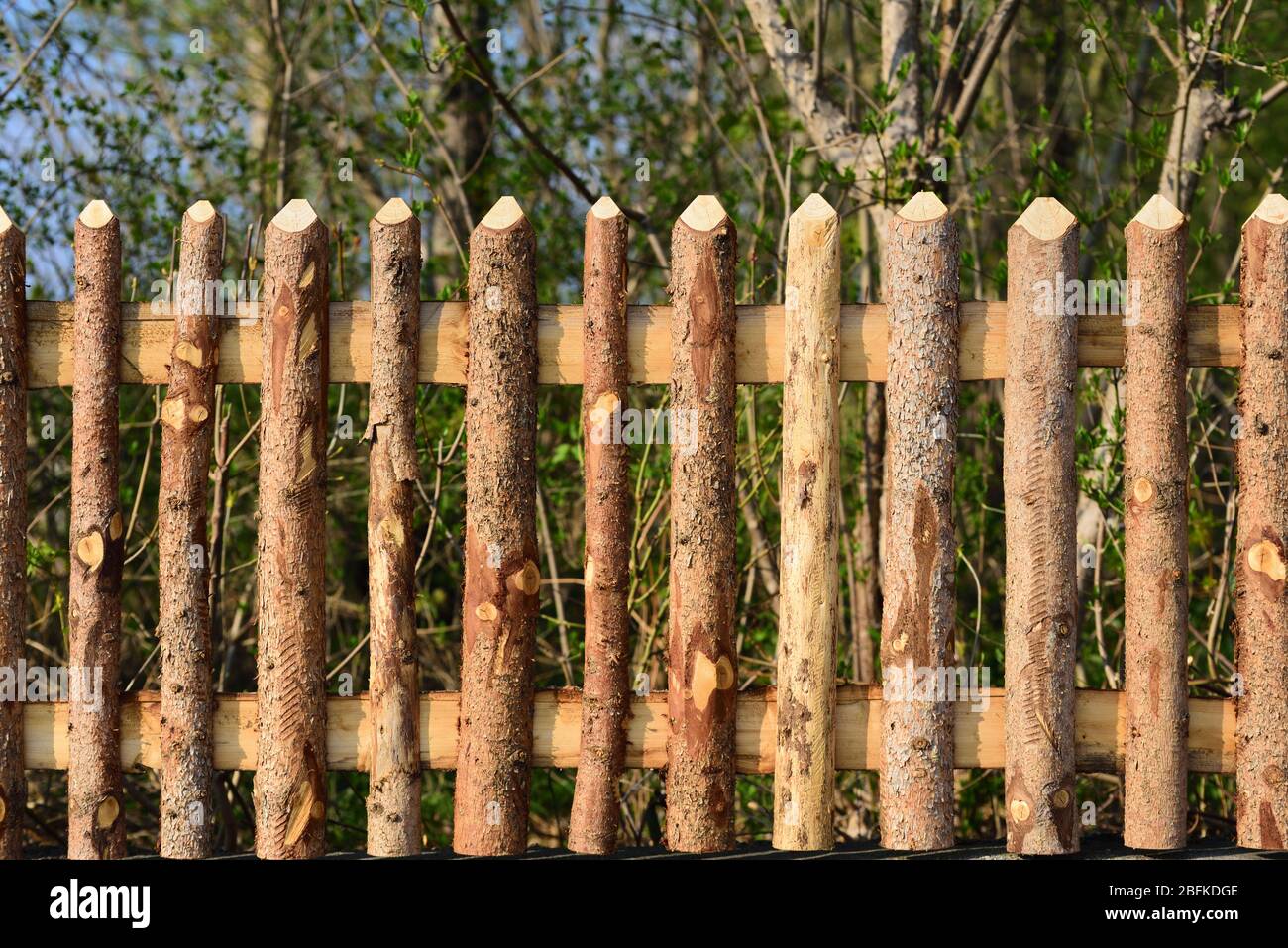
Thu Mar 28 - Written by: Ruth
20 Rustic Garden Fences to Inspire Your Next Renovation
Discover beautiful rustic garden fence ideas that add charm and character to your outdoor space. Learn about different materials, styles, and design options for your garden renovation.
Looking to give your garden a charming makeover? A rustic fence can transform your outdoor space into a cozy countryside retreat. Whether you’re dreaming of weathered wood panels or vintage-inspired designs these fences add character and privacy while keeping your garden secure.
Your fence doesn’t just mark property lines – it’s the frame that showcases your garden’s beauty. From reclaimed barn wood to DIY pallet projects we’ve rounded up 20 stunning rustic fence ideas that’ll make your neighbors stop and stare. These designs work with any budget and style from farmhouse chic to cottage core bringing that perfect blend of function and rustic appeal to your yard.
Understanding Rustic Garden Fence Styles
A rustic garden fence combines natural elements with weathered finishes to create that perfect countryside appeal. Here’s what you need to know about the most popular rustic fence styles.
Traditional Split-Rail Fences
Split-rail fences capture the essence of early American homesteads with their simple yet striking design. These fences typically feature horizontal rails made from split logs that rest in notched vertical posts. You’ll find them in zigzag or straight configurations using materials like cedar, locust or chestnut wood. The best part? They’re incredibly durable and can last 20-30 years with minimal maintenance. Split-rail fences work especially well for large properties borders farmhouse gardens or cottage-style landscapes.
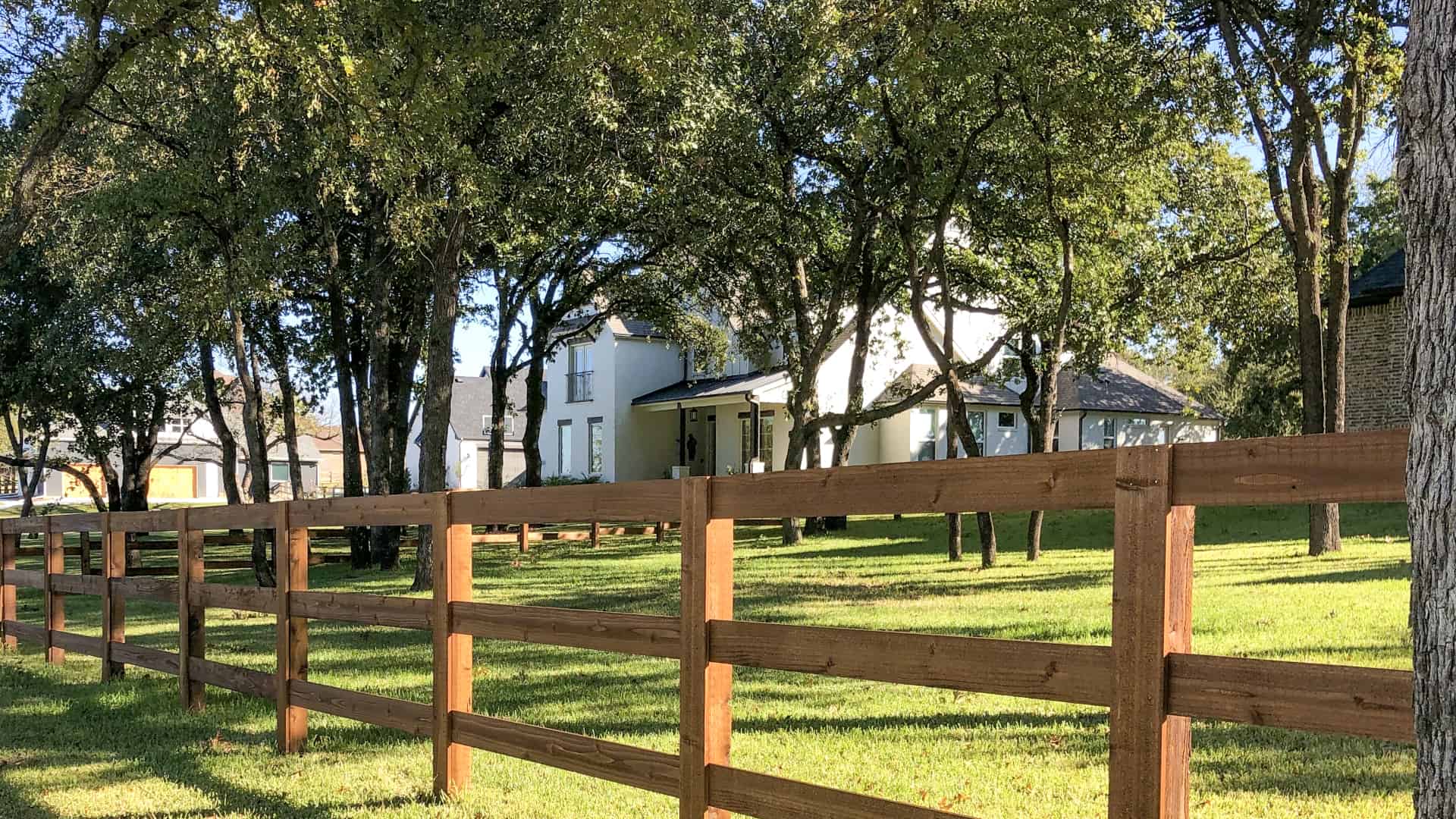 A classic split-rail fence creates an open, rustic boundary with natural wood textures. Source: Superior Fence and Rail
A classic split-rail fence creates an open, rustic boundary with natural wood textures. Source: Superior Fence and Rail
Weathered Wood Designs
Weathered wood fences bring instant character to your garden with their aged silvery-gray patina. You’ll see this style in post-and-rail vertical board or picket designs that showcase wood’s natural aging process. Many homeowners choose reclaimed barn wood or naturally aged cedar to achieve this look. The weathering process creates unique patterns textures that can’t be replicated with artificial aging techniques. These fences pair beautifully with climbing roses cottage gardens or rustic garden decor.
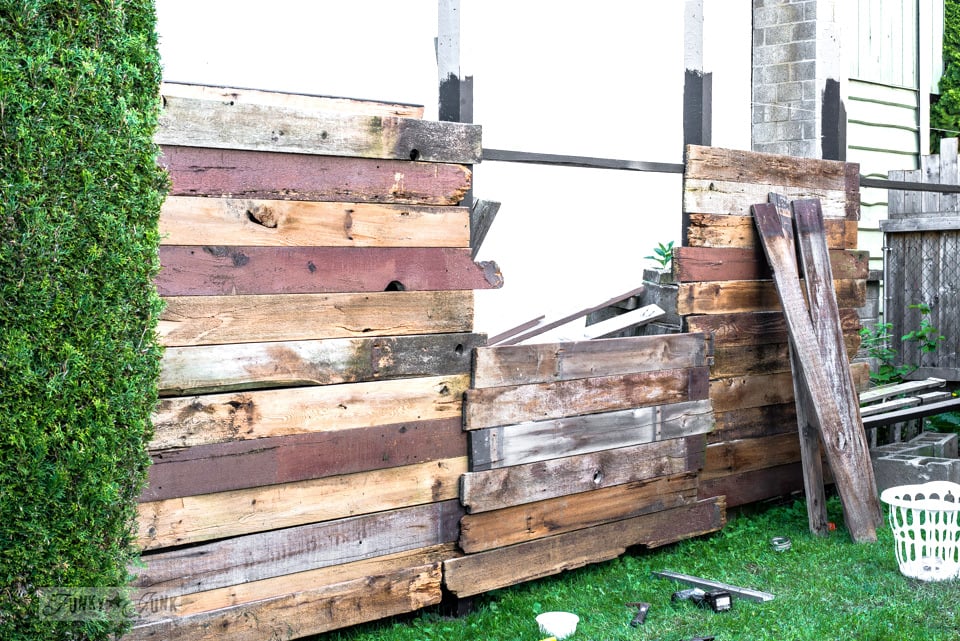 Weathered wood garden fence showing beautiful natural patina and rustic character. Source: Funky Junk Interiors
Weathered wood garden fence showing beautiful natural patina and rustic character. Source: Funky Junk Interiors
Natural Material Options
Natural material fences incorporate elements straight from nature to create authentic rustic charm. You can choose from woven willow branches bamboo poles or even living fence options like trained fruit trees. Stone bases combined with wooden tops offer another popular variation. For an eco-friendly approach consider using locally sourced materials like cedar pine or oak. These materials naturally resist decay and insects while blending seamlessly with your garden’s landscape. Plus they age gracefully developing more character over time.
Classic Log and Branch Fences
Natural materials like logs and branches create timeless rustic barriers that blend seamlessly with your garden landscape.
Horizontal Log Designs
Transform your garden boundary with stacked horizontal logs that create a sturdy yet charming fence line. These designs typically use cedar or pine logs stripped of bark and arranged in parallel rows between wooden posts. You’ll love how the natural variations in log diameter add visual interest while maintaining a clean linear look. For added durability, treat the logs with a natural sealant to protect against moisture and insects. Consider installing metal brackets between layers to ensure your logs stay securely in place even after years of weathering.
 A rustic garden fence crafted from small logs with natural bark creates an authentic countryside feel. Source: Alamy
A rustic garden fence crafted from small logs with natural bark creates an authentic countryside feel. Source: Alamy
Vertical Branch Patterns
Create an eye-catching display by arranging collected branches vertically to form a unique garden barrier. Start with sturdy posts and weave thinner branches between them or attach straight branches side by side for a more uniform look. You can mix branch sizes and types of wood to create interesting patterns and textures. This design works particularly well with birch maple or willow branches which offer attractive natural coloring. Leave gaps between branches to allow glimpses of your garden while maintaining privacy or place them tightly together for more coverage.
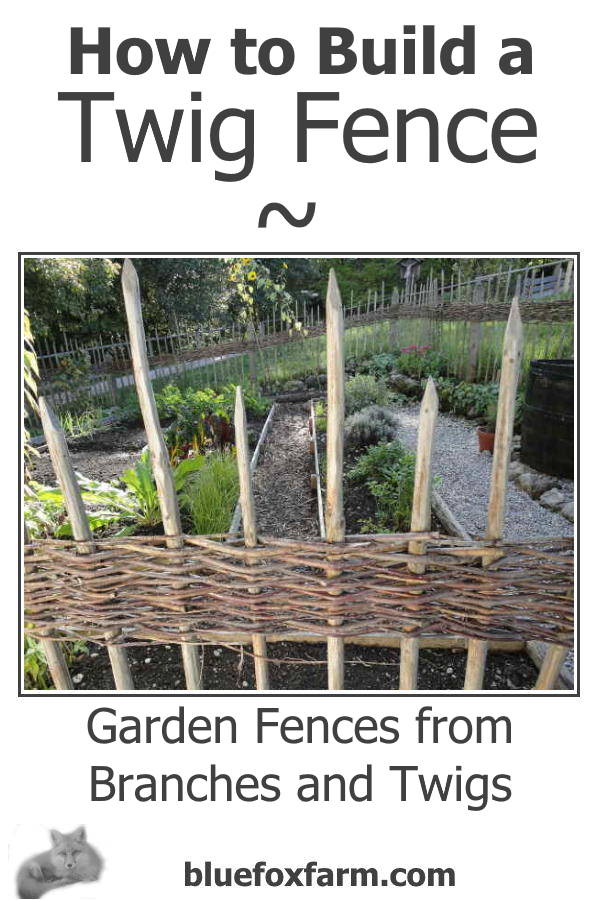 Vertical branches arranged to create a distinctive and natural garden boundary. Source: Blue Fox Farm
Vertical branches arranged to create a distinctive and natural garden boundary. Source: Blue Fox Farm
Reclaimed Wood Garden Boundaries
Transform your garden’s perimeter with reclaimed materials that tell a story while being eco-friendly and budget-conscious.
Barn Wood Fencing
Weathered barn wood brings instant character to your garden with its natural patina and aged appearance. You’ll find these planks often feature unique nail holes knots and saw marks that create an authentic rustic charm you can’t replicate with new materials. For the best results mount your barn wood planks vertically or horizontally on sturdy posts making sure to seal them against moisture. These fences work particularly well with climbing roses wildflowers or ivy which enhance their timeworn appeal.
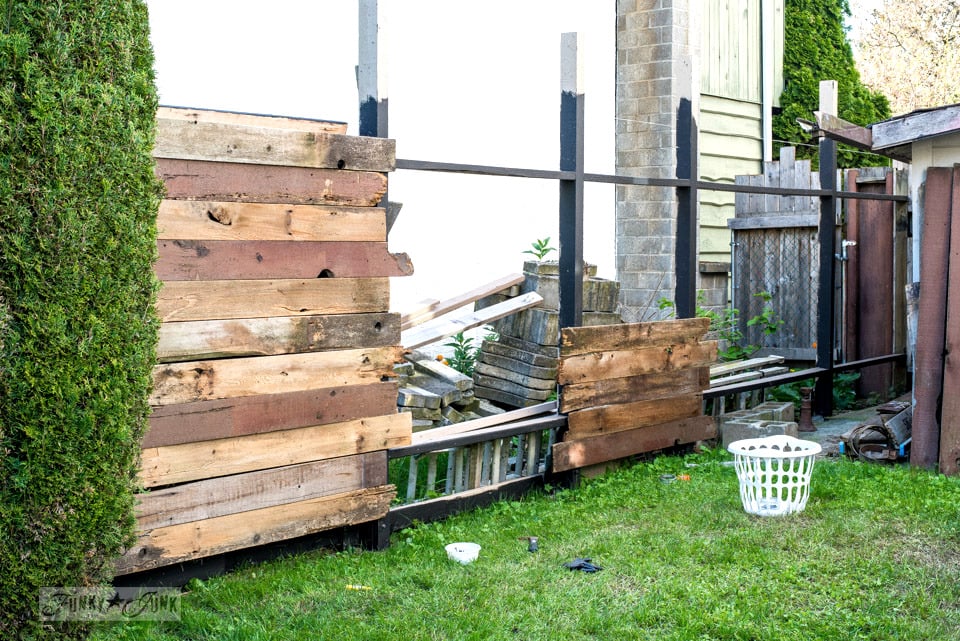 Reclaimed barn wood fence with natural weathered patina creating an authentic rustic boundary. Source: Funky Junk Interiors
Reclaimed barn wood fence with natural weathered patina creating an authentic rustic boundary. Source: Funky Junk Interiors
Distressed Lumber Designs
Give new life to old lumber by incorporating it into eye-catching fence patterns. Mix different wood widths and lengths to create distinctive geometric designs or stick to a uniform layout for a more structured look. You’ll want to clean each piece thoroughly and treat it with a weather-resistant sealant to prevent further deterioration. Consider adding metal accents like vintage hinges or decorative brackets to enhance the rustic aesthetic.
Vintage Door Incorporations
Old doors make stunning focal points when worked into your garden fence design. Place them strategically as gates or decorative elements with their original hardware intact for added authenticity. You’ll find that French doors windows and screen doors create interesting see-through sections while solid wooden doors offer perfect spots for hanging planters or climbing vines. Paint the doors in weathered pastels or leave them naturally distressed to maintain that coveted rustic charm.
Natural Stone and Wood Combinations
By combining natural stone and wood elements, you’ll create a stunning rustic fence that perfectly balances durability with organic beauty.
River Rock Base Designs
Transform your garden fence with a river rock base that adds both stability and visual interest. Start by creating a 12-18 inch foundation using smooth river rocks arranged in a flowing pattern. Stack the rocks using outdoor-rated masonry adhesive to ensure they stay put while wooden posts or panels rise above them. The combination works particularly well with cedar or redwood fencing materials which complement the natural tones of the river rocks. Add solar-powered cap lights along the stone base to create stunning evening ambiance while highlighting the textural contrast between wood and stone.
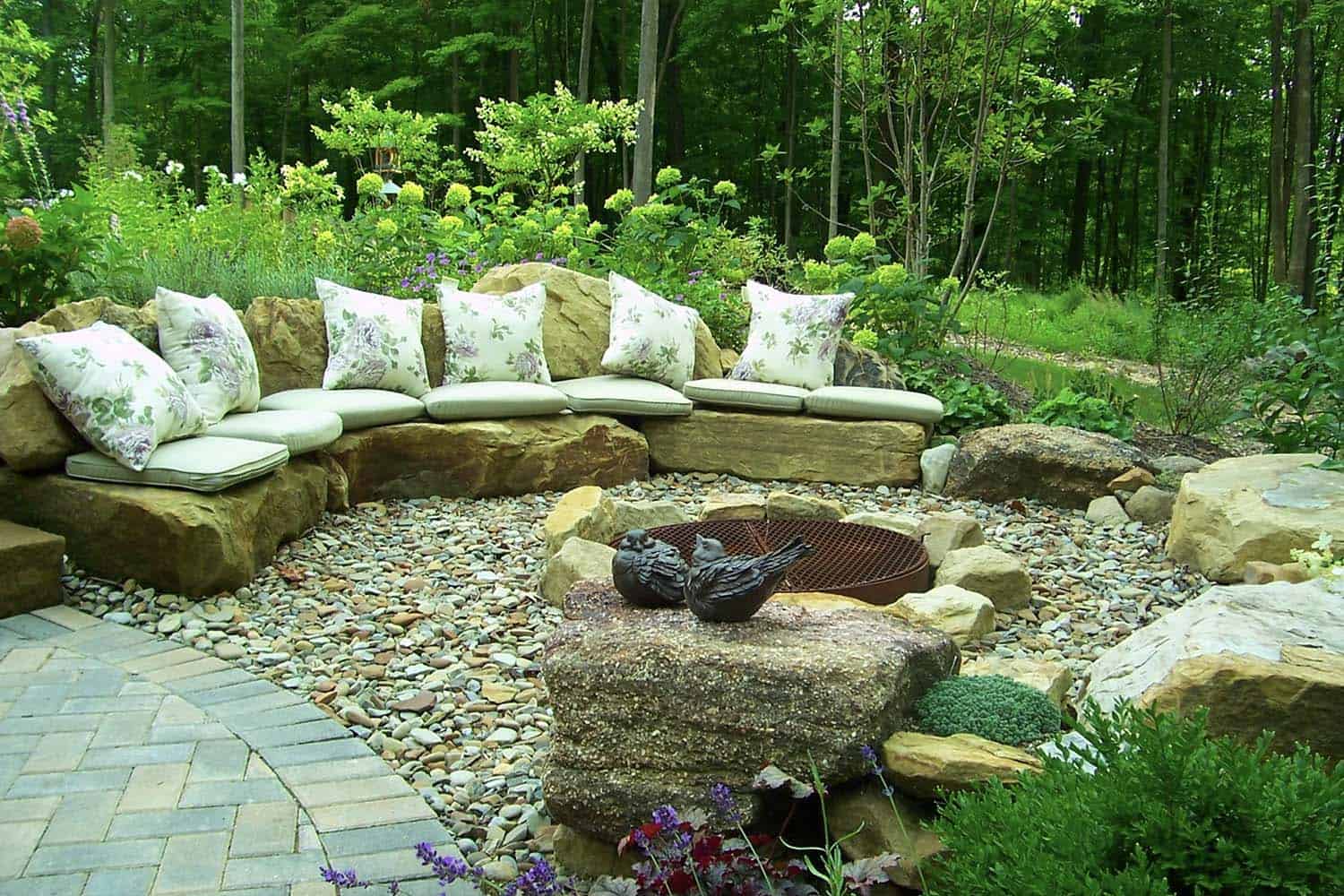 River rocks combined with wood elements create a textured base for garden fencing. Source: One Kindesign
River rocks combined with wood elements create a textured base for garden fencing. Source: One Kindesign
Boulder-Anchored Fences
Create a dramatic fence design by anchoring wooden panels between large natural boulders. Select boulders that are at least 24 inches in diameter and partially bury them for stability. Mount pressure-treated wooden posts directly against the boulders using heavy-duty brackets or custom metal fittings. Fill the spaces between boulders with horizontal wooden slats or vertical boards to complete your fence line. This design works especially well on sloped terrain where traditional fence posts might be challenging to install. Consider adding climbing vines like clematis or jasmine to soften the transition between stone and wood elements.
Woven Branch Garden Screens
Create enchanting garden barriers using natural branches woven into artistic patterns that blend seamlessly with your outdoor space.
Living Willow Fences
Living willow fences offer a dynamic screening solution that grows more beautiful each season. Start by planting willow rods 12 inches deep in early spring when the soil’s workable. Space them 12 inches apart in a single or double row to achieve your desired density. These flexible branches will take root and sprout leaves creating a lush green wall by summer. You’ll need to weave new growth horizontally between the vertical rods throughout the growing season. With proper maintenance including annual pruning in late winter living willow fences can reach heights of 6-8 feet providing natural privacy that changes with the seasons.
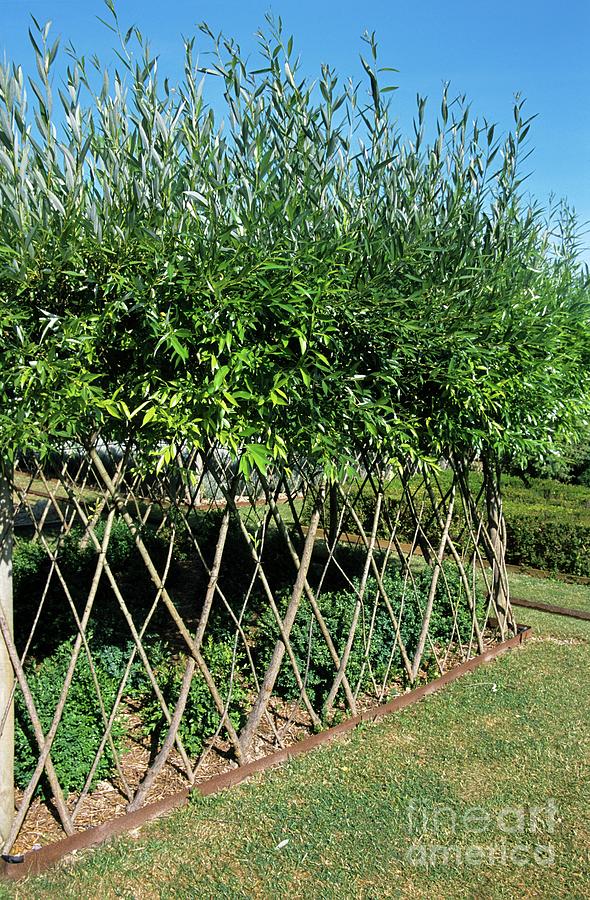 Living willow fence with new growth creating a natural, living garden boundary. Source: Science Photo Gallery
Living willow fence with new growth creating a natural, living garden boundary. Source: Science Photo Gallery
Wattle Weaving Techniques
Wattle weaving transforms your garden fence into an artistic masterpiece using flexible branches like hazel dogwood or willow. Start by securing sturdy posts every 4 feet to create your fence framework. Weave long flexible branches horizontally between these posts starting from the bottom. Layer your branches tightly working upward creating a basket-like pattern that’s both sturdy and decorative. For best results use freshly cut branches in early spring when they’re most pliable. You can vary the weaving pattern from traditional horizontal rows to diamond shapes or herringbone patterns for added visual interest.
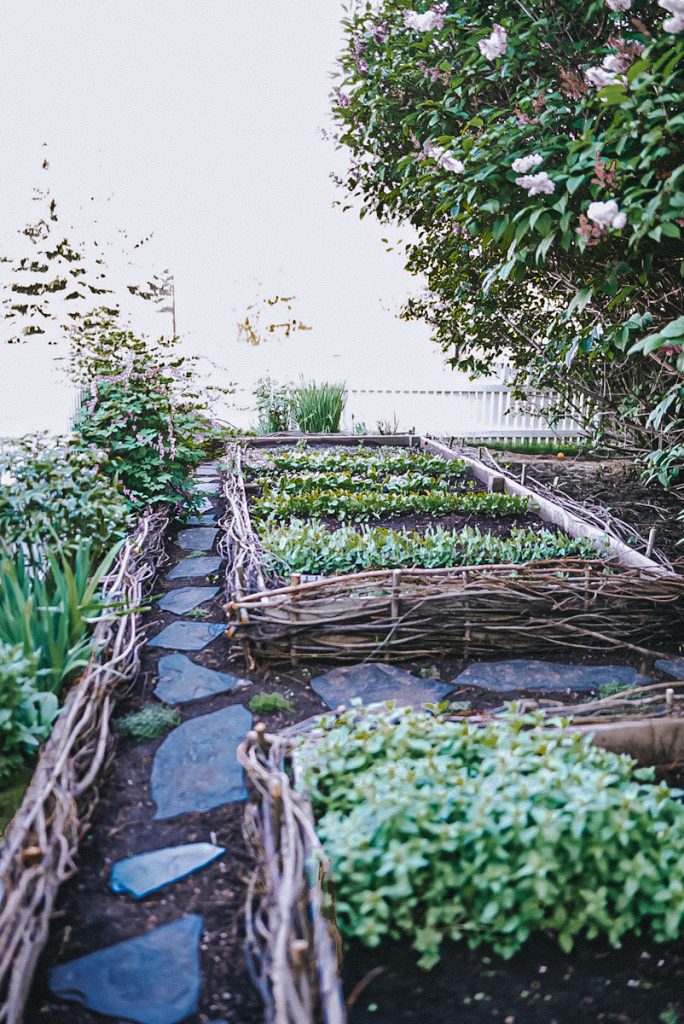 Intricate wattle weaving creates a distinctive basket-like pattern for garden enclosures. Source: B Vintage Style
Intricate wattle weaving creates a distinctive basket-like pattern for garden enclosures. Source: B Vintage Style
Modern-Rustic Metal Accents
Blend industrial elements with rustic charm by incorporating metal accents into your garden fence design. These contemporary touches create striking visual contrasts while maintaining that countryside appeal.
Corrugated Metal Panels
Transform your garden fence with corrugated metal panels for an eye-catching industrial-meets-rustic look. Mount these weathered panels between wooden posts to create a stunning contrast of textures. You’ll love how the metal develops a natural patina over time adding character to your outdoor space. For extra charm add wooden cap rails or cross beams to frame the metal sections. The panels work great in 4-foot or 6-foot sections letting you customize the design to fit your space. Try mixing galvanized steel with copper panels for an artistic touch or opt for pre-rusted metal sheets to achieve instant aged appeal.
 Corrugated metal panels with rustic patina framed by wooden posts create an industrial-rustic fusion. Source: Home, Garden and Homestead
Corrugated metal panels with rustic patina framed by wooden posts create an industrial-rustic fusion. Source: Home, Garden and Homestead
Wire Mesh Designs
Add an airy feel to your rustic fence with industrial wire mesh panels. These versatile screens offer support for climbing plants while maintaining visibility through your garden space. Choose from options like cattle panels hog wire or decorative metal grids to match your style. Mount the mesh between wooden posts and frame it with reclaimed lumber for that perfect rustic-modern balance. You’ll appreciate how these designs let light filter through while still providing structure for vines roses or climbing vegetables. For added interest try alternating mesh panels with solid wooden sections or installing the wire at different angles.
 Rustic wooden frame combined with wire mesh creates an airy, functional garden barrier that supports climbing plants. Source: Etsy
Rustic wooden frame combined with wire mesh creates an airy, functional garden barrier that supports climbing plants. Source: Etsy
Vintage Farm-Style Barriers
Transport your garden back in time with authentic farm-inspired fencing that adds nostalgic charm while maintaining practical functionality.
Post and Rail Designs
Recreate the timeless appeal of traditional farmland barriers with sturdy post and rail designs. These fences feature weathered wooden posts set 6-8 feet apart with 2-3 horizontal rails running between them. You’ll love how the chunky cedar or oak posts develop a silver-gray patina over time. For added character try mixing different wood species or incorporating reclaimed barn beams as your posts. Paint the rails in classic whitewash or leave them natural to showcase the wood grain. The open design lets breezes flow while clearly marking your garden’s boundaries making it perfect for cottage gardens herb patches or kitchen gardens.
Chicken Wire Combinations
Add vintage farm functionality with rustic chicken wire panels mounted between wooden frames. This classic combo offers an airy barrier that’s perfect for supporting climbing roses vines or sweet peas. Use aged cedar posts with rusted chicken wire for an authentic time-worn look. You can customize the height from 3-6 feet depending on your needs. Paint the wooden frame in heritage colors like barn red sage green or cream to enhance the farmhouse feel. The wire mesh keeps small critters out while maintaining visibility throughout your garden space. For extra charm attach vintage garden tools mason jars or enamelware as decorative accents.
Creative Pallet Wood Projects
Transform discarded wooden pallets into stunning garden fences with these budget-friendly design ideas.
Horizontal Pallet Patterns
Create a sleek modern-rustic look by mounting pallet boards horizontally along your fence line. Start by dismantling pallets to harvest their boards while keeping the best pieces for your project. Space your fence posts 6-8 feet apart then attach the pallet boards using rust-resistant screws. You’ll want to stagger the boards’ end joints for added stability and visual interest. Leave small gaps between boards to allow for wood expansion and create interesting shadow lines. For extra character try mixing boards with different weathering patterns or add a light whitewash to some pieces.
:max_bytes(150000):strip_icc()/GettyImages-1305330353-8a9dd90f99ab45839fabae2ac1de8244.jpg) Horizontal pallet boards create a modern yet rustic garden fence with minimal cost. Source: The Spruce
Horizontal pallet boards create a modern yet rustic garden fence with minimal cost. Source: The Spruce
Vertical Pallet Patterns
Stand pallet boards upright for a striking vertical fence design that draws the eye upward. Strip down your pallets then arrange the boards vertically between posts spaced 4-6 feet apart. You can create eye-catching patterns by alternating board widths or heights for a staggered top edge. Try spacing narrower boards closer together in some sections while leaving wider gaps in others. Add visual interest by incorporating both weathered gray boards and honey-toned pieces. Mount decorative cross pieces between posts to secure your vertical boards while adding architectural detail.
Natural Privacy Solutions
Transform your garden into a secluded sanctuary with these rustic privacy solutions that blend seamlessly with nature.
Bamboo Screen Designs
Create an exotic rustic vibe with bamboo screening that offers quick privacy and natural beauty. Install pre-made bamboo panels between wooden posts for an instant solution or plant living bamboo for a growing screen. You’ll love how the hollow stems create a gentle rustling sound in the breeze while providing dense coverage. For added durability, choose black or golden bamboo varieties treated with weatherproof sealant. Enhance your bamboo screen with solar-powered string lights or climbing jasmine for a magical evening atmosphere.
 Natural bamboo screens provide excellent privacy with organic textures and rustic appeal. Source: Amazon
Natural bamboo screens provide excellent privacy with organic textures and rustic appeal. Source: Amazon
Mixed Material Barriers
Combine different natural elements to craft a unique privacy fence that tells a story. Start with a sturdy wooden frame then weave in materials like willow branches reed screens or recycled copper wire. You’ll get excellent coverage while maintaining an artistic feel. Try alternating panels of weathered wood with sections of bamboo or create a pattern using metal mesh filled with river rocks. Add character by incorporating found objects like vintage window frames or architectural salvage pieces between the natural elements. This approach lets you customize your privacy solution while maintaining that coveted rustic charm.
Maintaining Your Rustic Garden Fence
Weather Protection Tips
Protect your rustic fence’s charm while extending its lifespan with proper weather protection. Start by applying a high-quality wood sealer every 2-3 years to prevent moisture damage and rot. Choose a water-repellent preservative that maintains the wood’s natural look rather than glossy finishes. Install drainage solutions like gravel trenches along the fence line to prevent water pooling. Cap your fence posts with decorative metal or wooden tops to shield end grain from rain. For metal components use rust-resistant paint or clear coating designed for outdoor use. Remove any climbing vines during winter months to prevent moisture retention. Check fence posts regularly for ground contact decay and reinforce weak spots with metal brackets when needed.
Natural Aging Techniques
Let your fence develop character naturally by using iron sulfate solution to speed up the silvery-gray patina development. Mix 1 part vinegar with 1 part steel wool and let it sit for 24 hours to create a natural aging stain. Apply tea or coffee grounds directly to the wood for an instant aged effect. For a weathered barn wood look spray the fence with salt water solution during sunny days. Add character by deliberately distressing new wood with chains or wire brushes. Let moss and lichen grow naturally on north-facing sections for an authentic aged appearance. Consider using reclaimed hardware that’s already weathered to match the fence’s rustic style. Embrace minor imperfections as they add to the overall rustic charm.
Conclusion: Choosing Your Perfect Rustic Fence
Select your rustic fence style based on your garden’s character budget and maintenance capacity. Consider your climate when picking materials like weathered wood stone or bamboo. Match your fence design with your home’s architecture to create a cohesive look. Remember to check local building codes before starting your project.